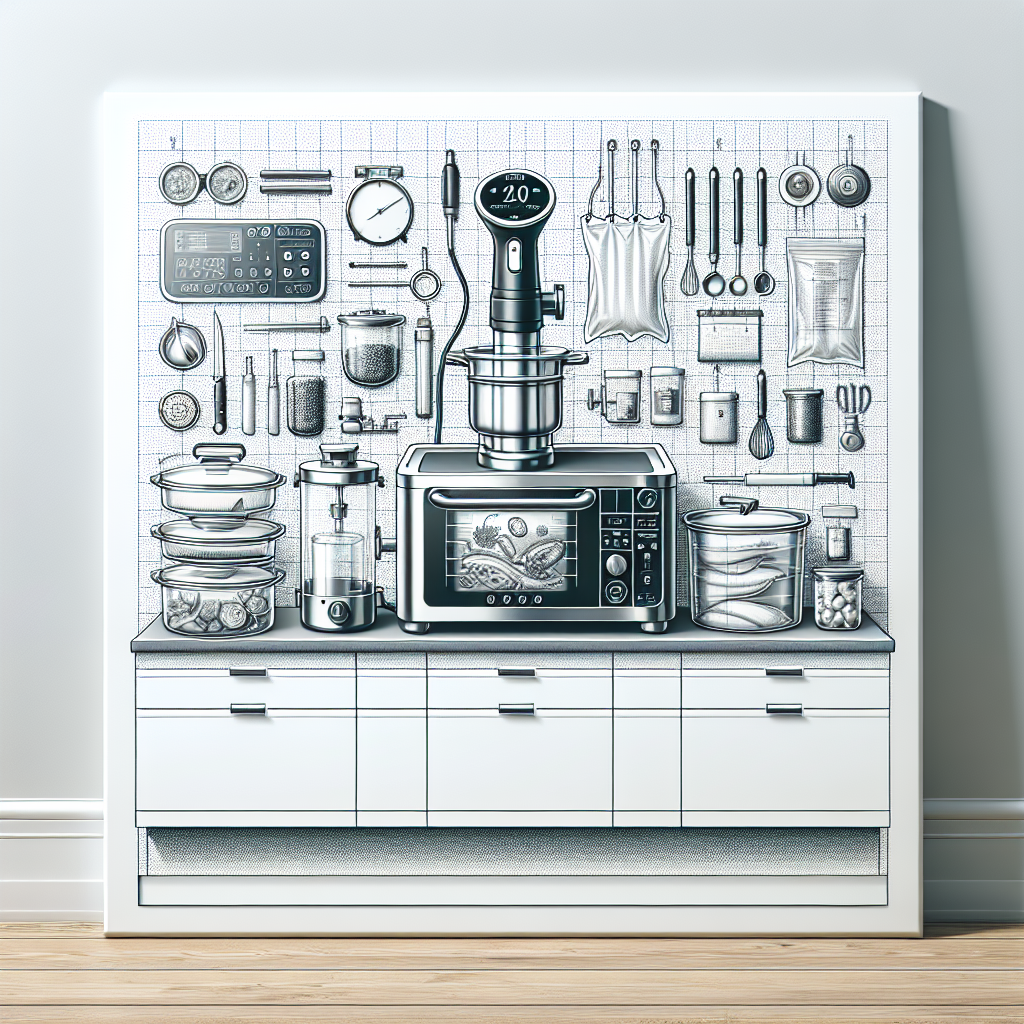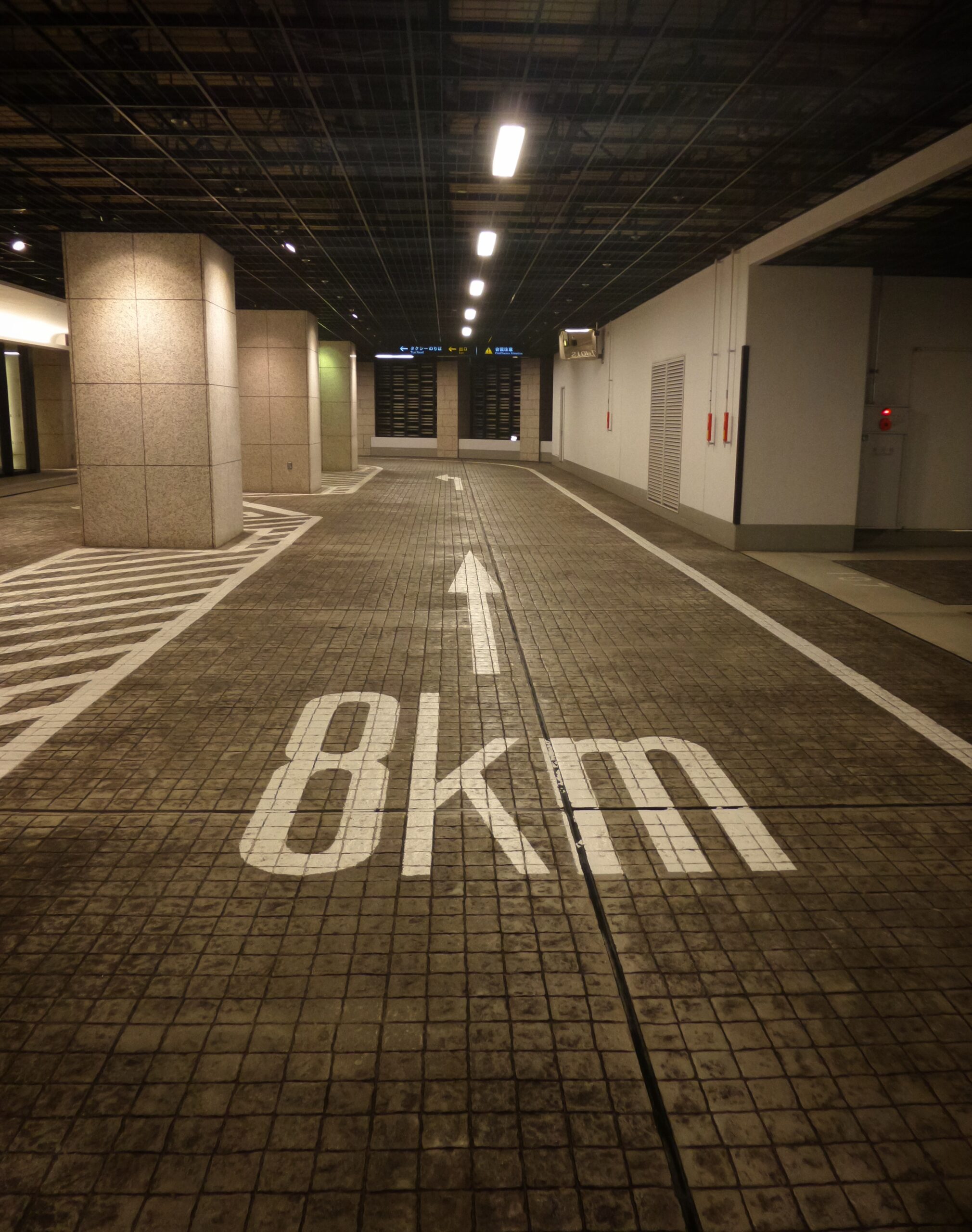
Wouldn’t it be amazing if you could cook delicious meals with minimal mess in your kitchen? Well, you’re in luck, because in this article, we’re going to explore the art of cooking sous vide without creating a chaotic and cluttered cooking space. So say goodbye to splattered countertops and food spills, and get ready to cook up a storm with ease and tidiness!

Organize Your Workspace
Having a well-organized workspace is essential for a successful and enjoyable sous vide cooking experience. By following these simple steps, you can ensure that everything you need is within easy reach and that your countertop is clutter-free.
Clear Clutter from the Countertops
Before you begin cooking sous vide, take a few minutes to clear any unnecessary clutter from your countertops. This will not only create a more visually appealing space, but it will also give you ample room to work and prevent any accidents or spills caused by items getting knocked over.
Designate a Specific Area for Sous Vide Cooking
To further streamline your workspace, it’s helpful to designate a specific area for your sous vide cooking setup. This can be a corner of your countertop, a dedicated table, or even a kitchen cart. By having a designated space, you’ll minimize the chances of your equipment and ingredients getting mixed up with other kitchen items.
Keep Essential Tools and Ingredients within Easy Reach
To ensure a smooth cooking process, it’s important to have all your essential tools and ingredients within easy reach. This includes your sous vide immersion circulator, vacuum-sealed bags or containers, tongs, and any seasonings or herbs you plan to use. By keeping these items nearby, you’ll be able to focus on the cooking process without constantly searching for what you need.
Prepare for Potential Spills
Sous vide cooking involves cooking food in a water bath for an extended period of time, and there is always a chance of spills or leaks occurring. By taking a few precautions, you can minimize the likelihood of messes and make cleanup a breeze.
Place a Large Tray or Baking Sheet under the Sous Vide Cooker
To catch any potential spills or leaks, place a large tray or baking sheet under your sous vide cooker. This will act as a protective barrier, preventing any water from seeping onto your countertop or floor. Be sure to choose a tray or sheet that can easily contain the volume of water your sous vide cooker requires.
Use Vacuum Sealed Bags or Containers with Secure Lids
When preparing your food for sous vide cooking, it’s important to use vacuum-sealed bags or containers with secure lids. This will ensure that no liquids or juices leak out during the cooking process. It’s also a good idea to double-check the seals on your bags or containers before placing them in the water bath to ensure a watertight seal.
Avoid Overfilling Bags or Containers
To prevent spills or leaks during cooking, it’s crucial to avoid overfilling your bags or containers. Leave enough empty space for the food to expand as it cooks, and be mindful of the maximum fill line indicated on your bags or containers. Overfilling can lead to messy spills and a compromised cooking process.
Use Proper Equipment and Techniques
Investing in quality equipment and using proper techniques is key to achieving the best results when cooking sous vide. By following these guidelines, you’ll ensure that your cooking process is efficient and that your food turns out perfectly cooked every time.
Invest in a Quality Sous Vide Immersion Circulator
A high-quality sous vide immersion circulator is an essential tool for precise and consistent cooking. Look for a model that offers accurate temperature control and a powerful circulation system. Investing in a reliable immersion circulator will not only enhance your cooking experience but also ensure that your food is cooked to perfection.
Ensure a Tight Seal on the Sous Vide Cooker
To prevent excessive steam and maintain a consistent water temperature, it’s important to ensure a tight seal on your sous vide cooker. This can be achieved by securely attaching the cooker to the side of the container or pot you’re using. A tight seal will help maintain the water bath’s temperature and prevent evaporation.
Prevent Excessive Steam with a Lid or Cover
While cooking sous vide, it’s common for steam to be generated. To prevent excessive steam and maintain a controlled cooking environment, consider using a lid or cover on your container or pot. This will help trap the heat and steam, ensuring that your food cooks evenly and reducing the risk of water evaporation.
Control Water Evaporation
Water evaporation is a common issue during sous vide cooking and can lead to a less consistent cooking temperature and longer cooking times. By taking a few simple steps, you can minimize water evaporation and improve the overall cooking process.
Check Water Levels Regularly
During the sous vide cooking process, it’s important to check the water levels regularly. If the water level drops too low, it can expose your food to air, resulting in uneven cooking. By adding additional water as needed, you’ll ensure that the water bath remains at the appropriate level and that your food is cooked evenly.
Cover Sous Vide Containers with Insulation
To minimize water evaporation, consider covering your sous vide containers with insulation. This can be as simple as placing a towel or blanket around the container to trap the heat and prevent water from evaporating. Insulation will help maintain a consistent temperature and reduce the amount of water that needs to be added during the cooking process.
Use a Floating Ball or Ping Pong Ball to Reduce Evaporation
Another effective way to reduce water evaporation is by using a floating ball or ping pong ball. Placing a clean ball on the surface of the water bath creates a barrier that helps trap heat and steam, reducing the amount of water that evaporates. This simple trick can make a big difference in minimizing water loss and maintaining a stable cooking environment.

Minimize Splattering and Mist
Sous vide cooking often involves finishing the food by searing it in a hot pan, which can result in splattering and mist. To keep your kitchen clean and reduce the chances of oil splatters, follow these tips.
Place a Lid on Searing and Finishing Pans
When searing or finishing your sous vide-cooked food in a hot pan, it’s helpful to place a lid on the pan. This will help contain any oil splatters and reduce the amount of mist that escapes into your kitchen. Using a lid will not only keep your stovetop clean but also prevent any potential accidents caused by hot oil splattering.
Use a Splatter Screen
Another option to minimize oil splatters is to use a splatter screen. This fine mesh screen is placed over the pan and acts as a barrier, preventing hot oil from splattering and making a mess. A splatter screen is a practical tool to have in your kitchen, as it can be used for a variety of cooking techniques beyond sous vide.
Opt for Oil with a Higher Smoke Point
Choosing the right oil for searing is also crucial in minimizing splattering and mist. Oils with higher smoke points, such as avocado oil, canola oil, or grape seed oil, are less likely to splatter when heated to high temperatures. By opting for oils with higher smoke points, you can reduce the chances of oil splatters and make cleanup easier.
Clean Up as You Go
To maintain a tidy and organized workspace, it’s important to clean up as you go throughout the sous vide cooking process. By following these simple steps, you’ll prevent messes from piling up and make the post-cooking cleanup much more manageable.
Wipe Spills and Splatters Immediately
If you notice any spills or splatters during the cooking process, it’s important to wipe them up immediately. Use a clean cloth or paper towel to remove any liquid or debris from your countertops, equipment, and stovetop. By addressing spills as they happen, you’ll prevent them from drying or spreading, making cleanup easier later on.
Dispose of Vacuum Sealed Bags Properly
Once your sous vide cooking is complete, it’s crucial to dispose of the vacuum-sealed bags properly. Empty any food remnants into a trash bag and discard the bags according to your local waste disposal guidelines. Properly disposing of the bags will help keep your kitchen clean and prevent any unwanted odors.
Clean Sous Vide Equipment after Each Use
To ensure the longevity of your sous vide equipment and maintain proper hygiene, it’s important to clean your equipment after each use. Follow the manufacturer’s instructions to clean your immersion circulator, containers, and any other tools you used during the cooking process. By keeping your equipment clean, you’ll avoid any potential cross-contamination and ensure optimal performance.

Properly Dispose of Sous Vide Water
When you’re finished with your sous vide cooking, disposing of the water properly is essential to maintaining a clean kitchen and being environmentally responsible.
Allow the Sous Vide Water to Cool and Settle
Before discarding the sous vide water, allow it to cool and settle. This will give any food particles or debris time to sink to the bottom of the container, making it easier to separate the clean water for disposal.
Discard Water in a Sink, Toilet, or Drain
Once the water has cooled and settled, you can safely dispose of it down a sink, toilet, or drain. However, be sure to check your local regulations and plumbing guidelines, as some areas may have restrictions or guidelines regarding the disposal of large volumes of water.
Avoid Pouring Water on Plants or Grass
While it may be tempting to use the sous vide water to water your plants or grass, it’s best to avoid doing so. The water used for sous vide cooking may contain oils, seasonings, or other substances that can be harmful to plants. Instead, opt for proper disposal methods to ensure the well-being of your plants and the environment.
Consider Using Sous Vide Accessories
There are several sous vide accessories available that can enhance your cooking experience and help prevent messes in the kitchen. Consider incorporating the following accessories into your sous vide setup.
Choose a Sous Vide Rack for Organization
A sous vide rack is a helpful accessory for keeping your food organized during the cooking process. It holds the vacuum-sealed bags or containers in place, preventing them from floating or shifting in the water bath. By using a rack, you’ll ensure that your food cooks evenly and minimize the risk of spills or leaks.
Utilize Sous Vide Insulation Balls to Reduce Evaporation
Sous vide insulation balls are small, heat-resistant balls that can be placed on the surface of the water bath. They act as an insulating barrier, reducing water evaporation and heat loss. By using sous vide insulation balls, you’ll conserve water, maintain a consistent temperature, and minimize messes in your kitchen.
Try Vacuum Sealing Devices for Precise Cooking
If you frequently cook sous vide, investing in a vacuum sealing device can greatly improve your cooking process. Vacuum sealers ensure a tight seal on your bags, preventing any leaks or spills. They also remove excess air, allowing for more precise cooking and enhancing the flavors and textures of your food.

Think Ahead for Best Results
To achieve the best results with sous vide cooking, it’s important to plan ahead and consider a few key factors. By taking the time to think ahead, you’ll ensure that your food is cooked to perfection and that the cooking process goes smoothly.
Plan Your Cooking Time and Temperature
Before you begin cooking sous vide, take some time to research the optimal cooking time and temperature for the specific food you’ll be cooking. Different ingredients require different cooking times and temperatures to achieve the desired results. By planning ahead, you’ll have a clear understanding of how long the cooking process will take and can plan accordingly.
Prep Ingredients in Advance
To streamline your sous vide cooking experience, consider prepping your ingredients in advance. This can include cleaning, trimming, and seasoning your food before sealing it in the bags or containers. By prepping ahead of time, you’ll save time and ensure that everything is ready to go once you start the cooking process.
Consider Sous Vide Recipes with Minimal Juices or Sauces
While sous vide cooking can produce incredibly flavorful and tender results, it’s important to consider the amount of liquid involved in the recipe. Recipes with excessive juices or sauces can increase the risk of spills or leaks during the cooking process. Opt for recipes that require minimal liquids to keep the cooking process mess-free.
Practice Safe Food Handling
As with any cooking method, practicing safe food handling is of utmost importance when cooking sous vide. By following these guidelines, you can ensure that your food is cooked safely and that any potential health risks are minimized.
Follow Proper Food Safety Guidelines
When handling and preparing food for sous vide cooking, it’s crucial to follow proper food safety guidelines. This includes washing your hands regularly, keeping raw and cooked foods separate, and storing perishable ingredients at the appropriate temperature. By practicing safe food handling, you’ll reduce the risk of foodborne illnesses and ensure the safety of yourself and your loved ones.
Thoroughly Cook Vacuum Sealed Foods
When cooking vacuum-sealed foods sous vide, it’s essential to ensure that the food is thoroughly cooked to a safe internal temperature. Use a reliable food thermometer to check the doneness of your food and confirm that it has reached the appropriate temperature to kill any potential bacteria.
Chill Cooked Foods Rapidly to Prevent Bacterial Growth
After sous vide cooking, it’s important to chill your cooked foods rapidly to prevent bacterial growth. Plunge your vacuum-sealed bags into an ice bath or refrigerate them as soon as the cooking process is complete. Rapid chilling will help maintain the quality and safety of your food.
In conclusion, cooking sous vide doesn’t have to create a mess in your kitchen. By organizing your workspace, preparing for potential spills, using proper equipment and techniques, controlling water evaporation, minimizing splattering and mist, cleaning up as you go, properly disposing of sous vide water, considering the use of accessories, thinking ahead, and practicing safe food handling, you can enjoy a clean and successful sous vide cooking experience. With these tips and tricks, you’ll be able to create delicious meals while keeping your kitchen neat and tidy. Happy cooking!



